
Too fast, too slow, just right? The UN’s 2022 population projections
Published today, the long-awaited United Nations global population projections are causing plenty of debate. Should we worry about too many people or too few? Do they mean salvation or catastrophe, or even a bit of both? Are they right? Most importantly: what do we do about what they tell us? Our Head of Campaigns and Communications, Alistair Currie, tries to see the wood through the 10.4 billion trees.
Ten billion, four-hundred-and-thirty-one-million. That is the magic number in the brand new UN projections. That’s where they foresee our world’s human population peaking, in 2086, before starting to inch down by roughly ten million a year towards the end of the century. That’s nearly two-and-a-half billion people more than we have today, and more than five times the size of the population when Population Matters’ patron Sir David Attenborough was born.
Also, though, this is the first time in twenty years the UN has projected that population is most likely to stop growing this century, albeit at the very end. That is a milestone.
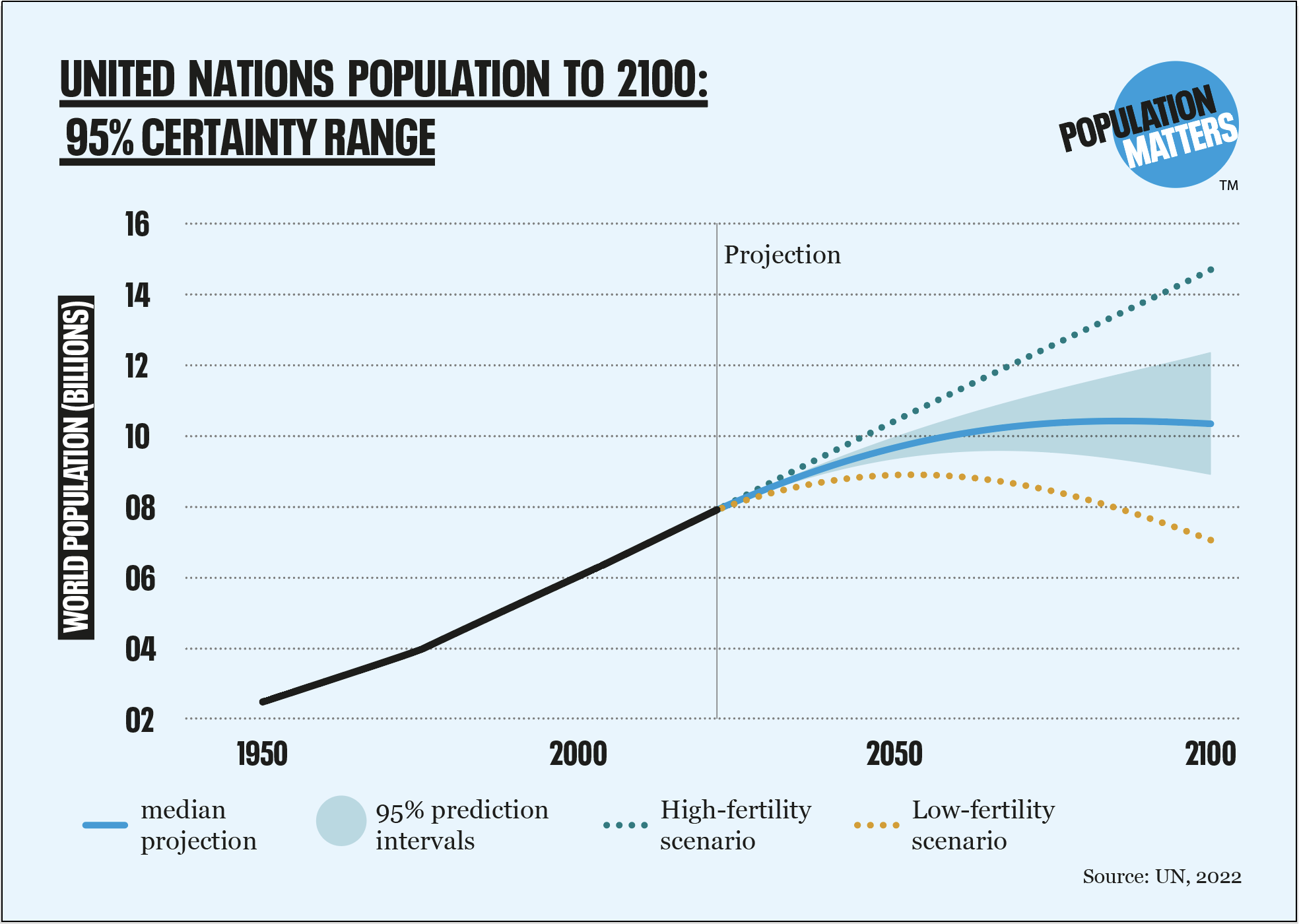
(If you want to dig into the numbers a bit more, my colleague Monica Scigliano has written a companion article examining the UN’s findings in detail, looking at the numbers, how the UN produced them, and unpacking some of their implications.)
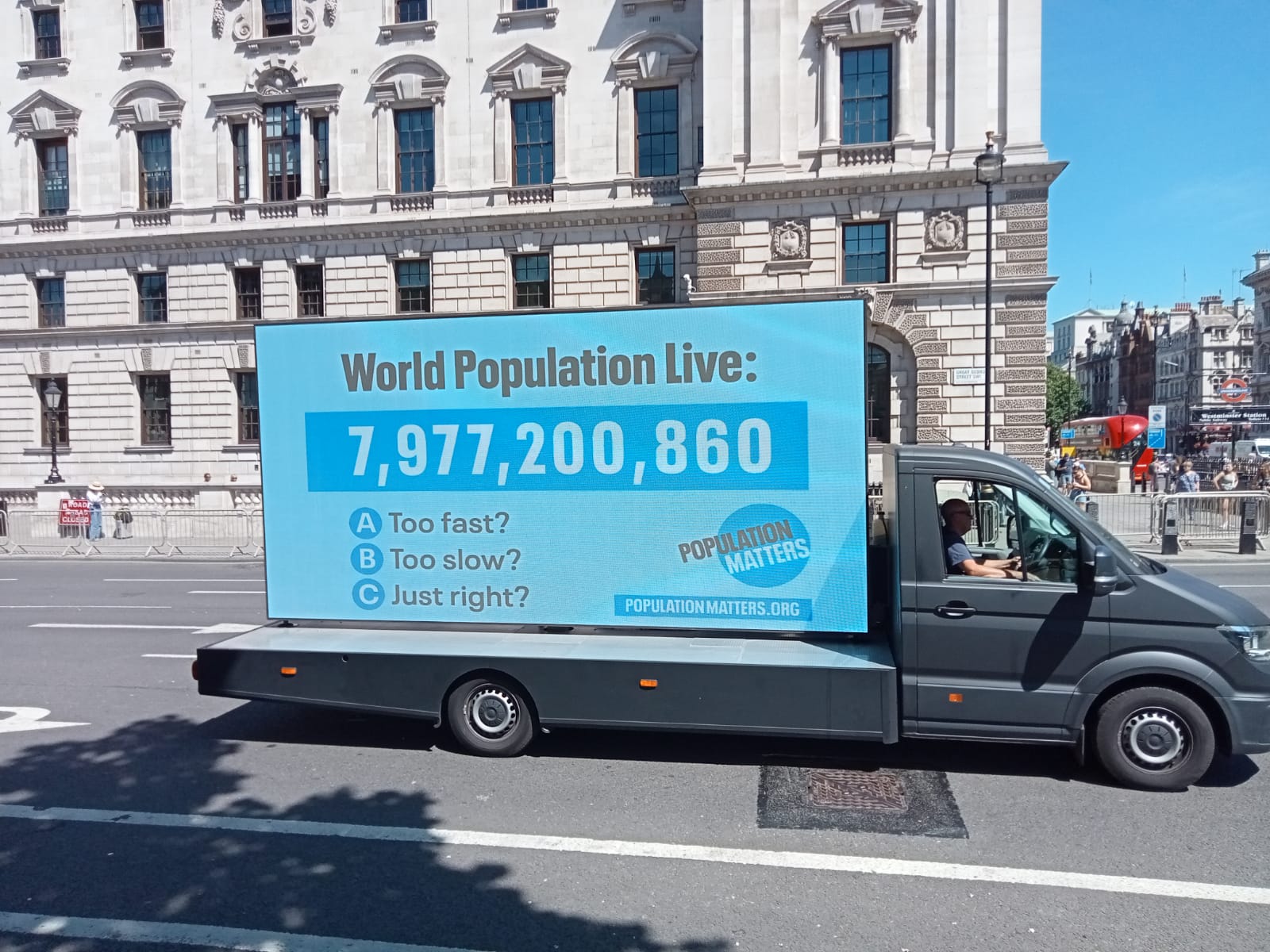
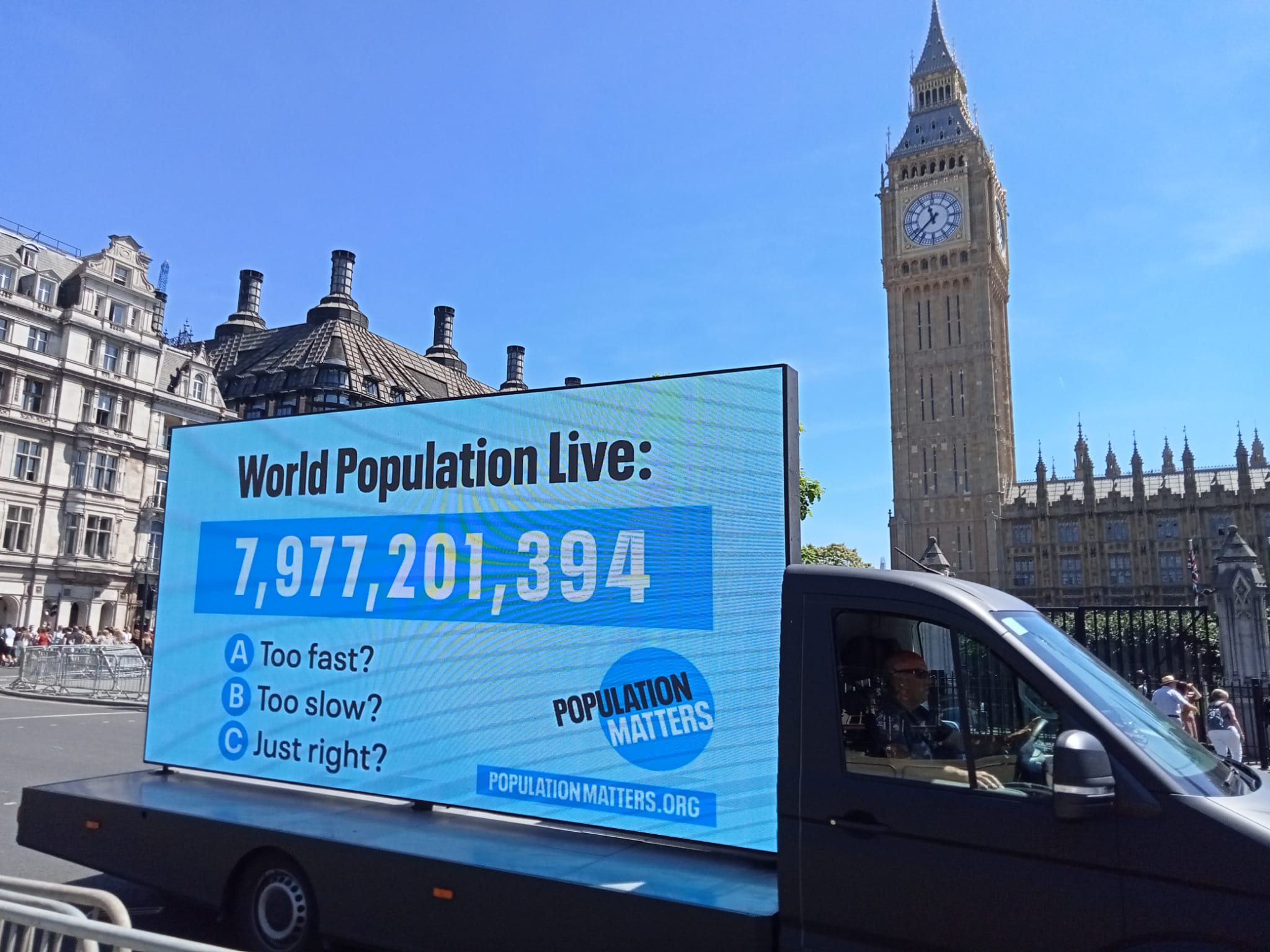
Behind the big picture
As Monica’s article explains, there is a complex picture underlying the simple curves on this graph. In almost every country, fertility rates (how many children women have) have been going down. But they are going down from many different starting points and at different rates – in some places they remain high, in others they are already below the replacement rate of 2.1. (Population does not automatically start going down when that happens, however.)
While we may think of decline as something to be feared, there is a critical message here: the decrease in family size in places where those have long been high is a good thing.
High population growth is a red flag for injustice and human suffering. It persists where people are poor, where infant mortality remains high, where too few children finish school and where women cannot freely access and use modern contraception. The bending down of the population curve is therefore a victory: it means better lives and greater choices for a greater proportion of people.
The fact that it hasn’t bent down sooner is a sign that we have not done enough to address that injustice and suffering. In a number of the world’s Least Developed Countries, as the UN defines them, fertility rates remain above six, compared to a global average of just 2.3.
We know too that in 2022 poverty and food insecurity are growing again, that globally about half of all pregnancies are unintended, that more women have an unmet need for modern contraception than ever before and that the United Nations’ Sustainable Development Goals for 2030 are just not on track to be met. As the UN says in its report:
“While economic growth may struggle to keep pace with population growth, poverty can deprive individuals of opportunities and choices, limiting their ability to control their fertility, perpetuating high levels of childbearing often starting early in life and ensuring the continued rapid growth of the population.”
Progress can only continue if rapid progress is made in advancing global justice, and investment in and commitment to those empowering, positive and voluntary population solutions is maintained. We must also recognise that our environmental crises – especially climate change – are already taking a heavy toll on hundreds of millions of people.
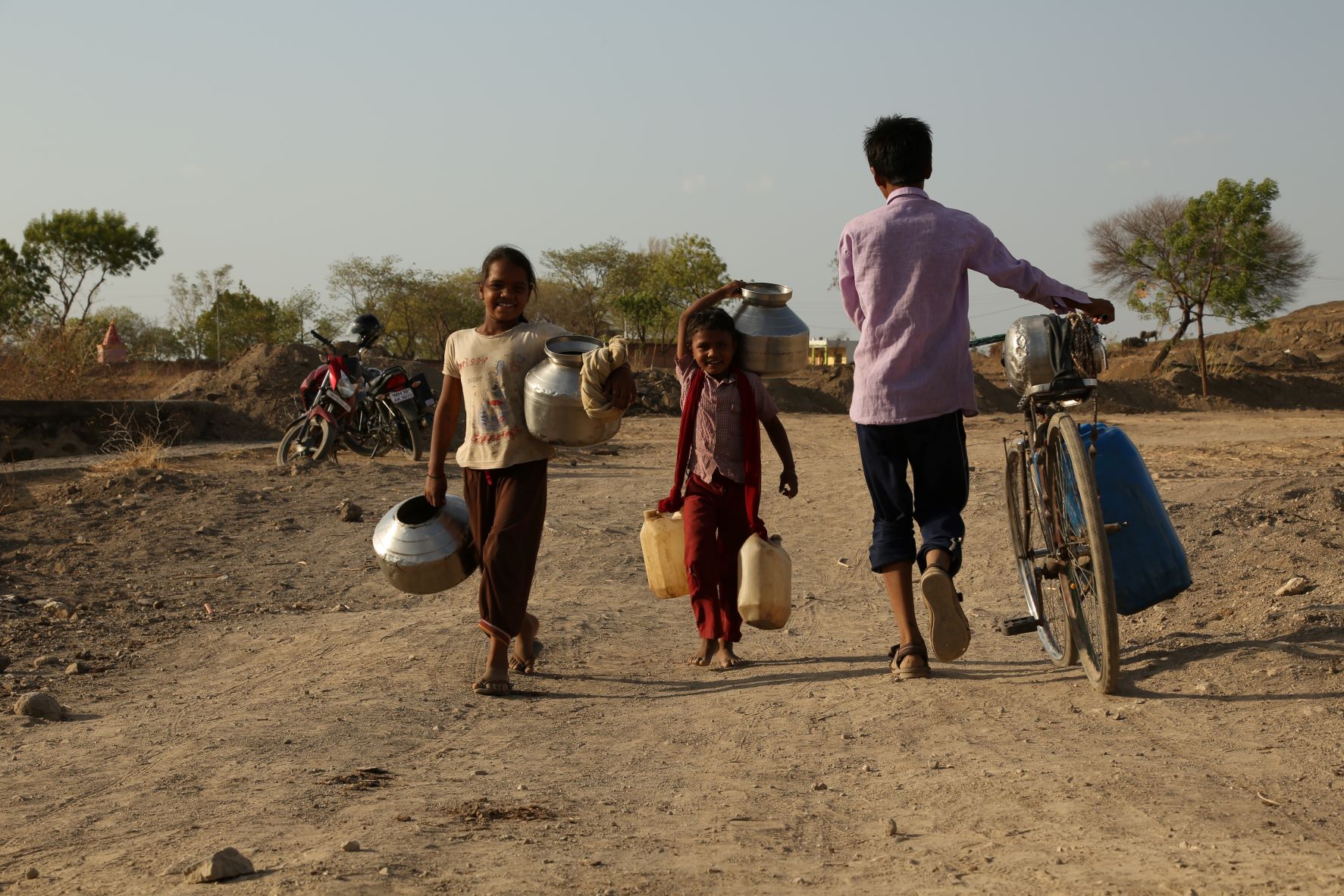
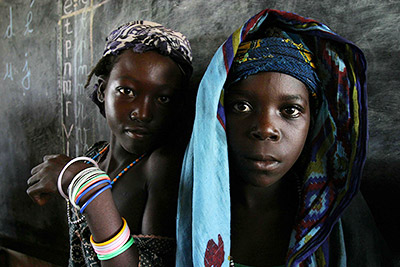
Nothing to fear
Although there is much talk in the media, and by billionaires who should know better, about supposedly crashing fertility rates, the UN’s figures show that our population will grow for decades to come. The fact that the number of children being born each year will soon peak does not mean, of course, that the line will then trend down to zero. In the UN’s More Developed Regions, on average the projections expect fertility rates to actually increase a little over the century.
The good news about lower numbers of children being born in the richest countries is very good news indeed: it is in these countries that the environmental impact of each person is the highest. That trend can help solve our environmental crises – not just climate change, but species extinctions, droughts and the depletion of other natural resources. Until we do that, there can be no secure future for children born anywhere over the 21st century.
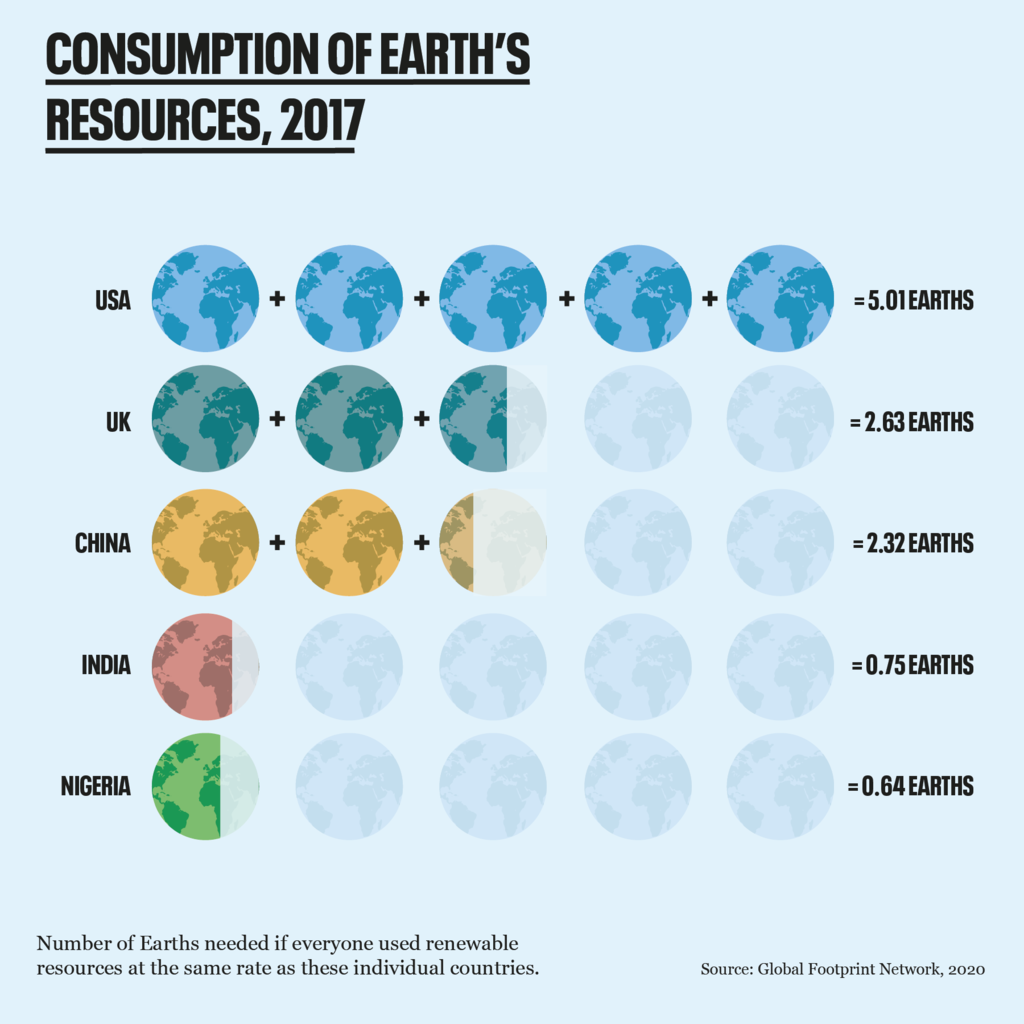
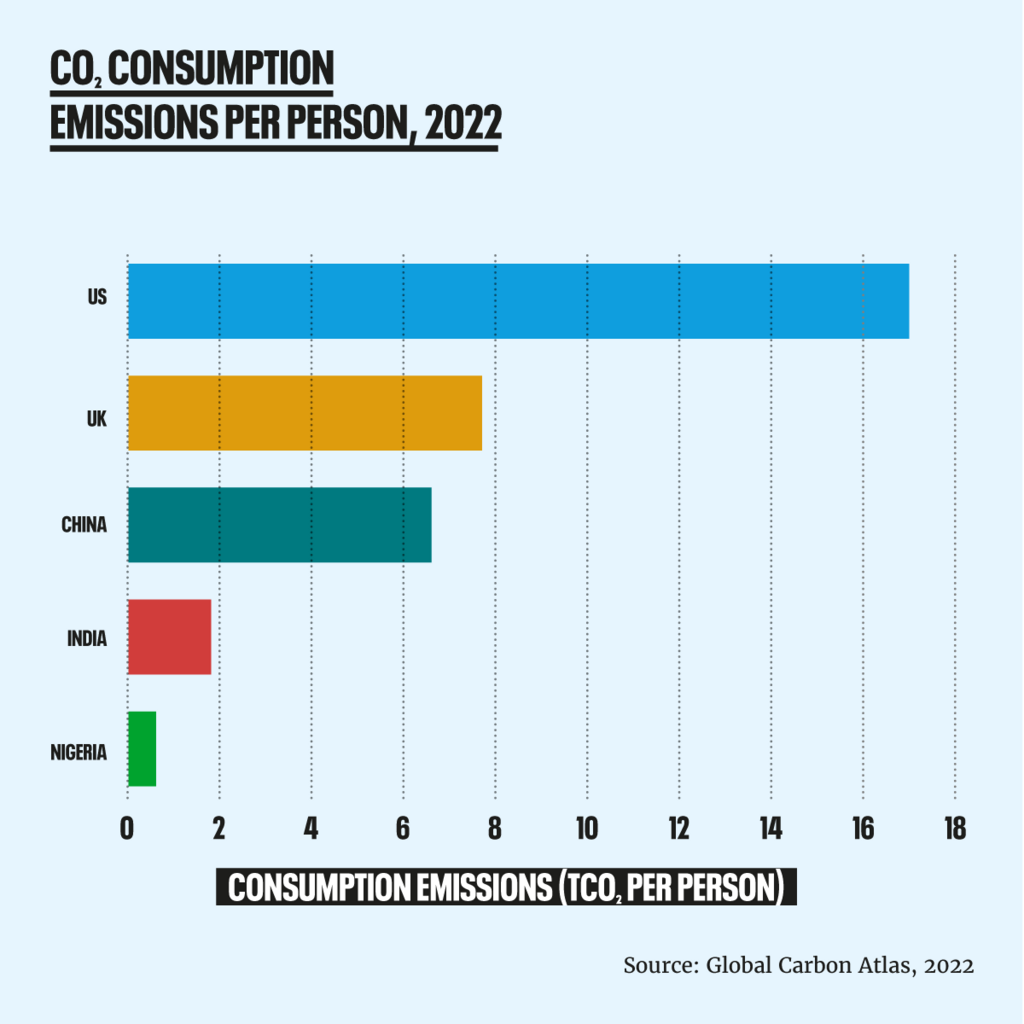
Earning an above-average wage in most parts of the Global North makes you among the wealthiest 10% of people in the world – those of us who fall into that category need to stop thinking of the rich as someone else and start recognising our responsibilities to change, and to make change happen.
People choosing to have smaller families and consuming less in affluent places means allowing people in less affluent communities to consume more.
The take-home message
When it comes to population, the best chance for the best future for all of us is bringing our population growth to an end as soon as we can. That will not solve our problems, but it will mean that everything else we do to make our human world fairer and protect the natural world will be more effective.
The bending down of the curve identified by the UN today is a great sign of progress, but we can and must do more.


